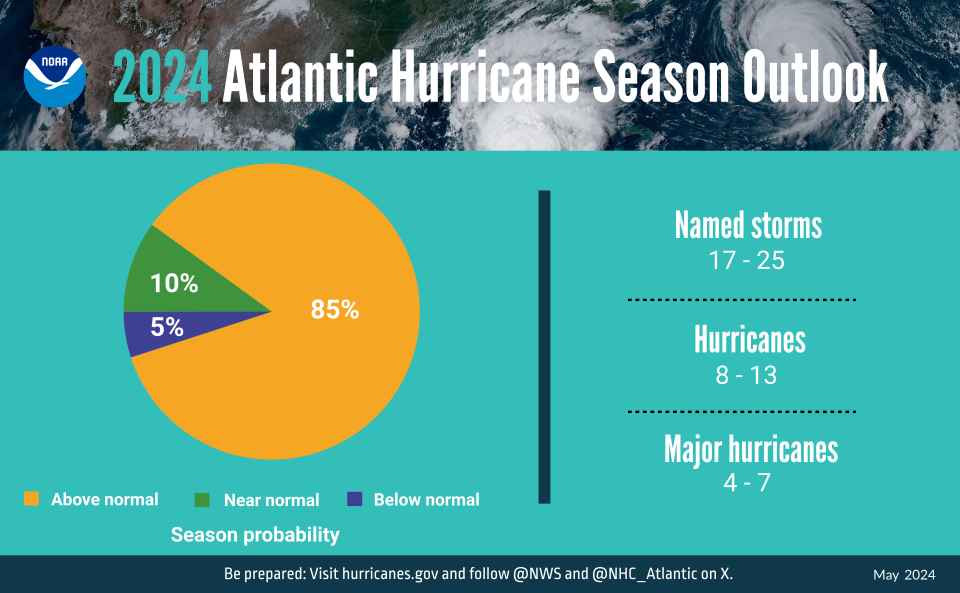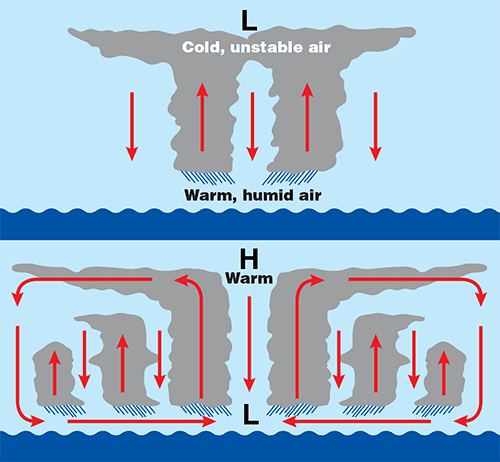What's the difference between a tropical disturbance and storm? Here's what to know
The 2024 Atlantic hurricane season is set to be a hyperactive one. A typical season has about 14 named storms. The National Weather and Atmospheric Association’s forecasters at the Climate Prediction Center have predicted that there could be between 17 to 25 named storms this year.
Not all tropical disturbances become named storms, which means that to get to those forecasted numbers, we will see a lot of activity in the Gulf of Mexico and the Atlantic this year.

Few of the systems that form will develop into named storms before they fizzle out, and fewer still will develop into a hurricane or major hurricane. So, what are the factors at play to create conditions conducive to further storm development?
Here’s a look at the life cycle of a hurricane.
What causes a hurricane to form?
On paper, hurricanes don’t actually require that much to form. All they need is warm water and some wind.
Hurricanes tend to form in waters around the equator where ocean temperatures can reach the 80-degree minimum required to begin developing. When wind moves over these warm bodies of water, it causes water to evaporate from the surface of the ocean.
That vapor then rises, cools and condenses into large water droplets which create cumulonimbus clouds. From there, these systems go through what meteorologists have divided into four stages: A tropical disturbance, a tropical depression, a tropical storm and a tropical cyclone, or hurricane.
What’s a tropical disturbance?
Tropical disturbances are basically a cluster of thunderstorm clouds. The clouds begin to release heat, columns of warm air begin to form as the air rises, and these columns continue to grow higher and bigger. As air pressure begins to shift, a creating a whirlpool effect.
What’s a tropical depression?
A tropical depression is the next step of the process and this is when we begin to see stronger winds. This is caused by those columns of air continuing to become stronger and larger.
When the warm vapor rises to the top of the clouds and cools down, the heat it once held has to go somewhere. In this case, that heat energy is released into the air at the top of the clouds, which makes the air pressure higher. That pressure begins pushing out into the surrounding areas of low pressure, creating those stronger winds and what is essentially a loop that creates more thunderstorms.

What’s a tropical storm?
When a tropical depression is able to stay inside an area conducive to its continued development, its strength intensifies. If it’s able to create enough pressure to push out winds reaching 39 mph, it becomes a tropical storm and it’s given a name. Inside these storms, wind speeds start to twist and turn around the eye of the storm.
What is a tropical cyclone?
A tropical storm becomes a tropical cyclone, or a hurricane, once sustained wind speeds reach 74 mph. At this point, the storm is massive. According to NOAA, hurricanes are at least 50,000 feet high and 125 miles across. The eye alone can range between 5 and 30 miles wide.
From here, when a hurricane continues to strengthen, we refer to the Saffir-Simpson Hurricane Wind Scale.
What causes a tropical disturbance or hurricane to fizzle out?
There is no magic that prevents a tropical disturbance from becoming a hurricane or causes a hurricane to fizzle out. The simple answer is that these storms die when they no longer have the energy to sustain themselves, bringing us back to the two ingredients they need to form in the first place: Warm water and vapor.
We see hurricanes fizzle out soon after they make landfall because they no longer have access to the warm water fueling them. In rare cases, these storms can find a path back out into warm water and begin strengthening again.
This article originally appeared on Pensacola News Journal: Tropical disturbance vs. tropical storm: The life of a hurricane

